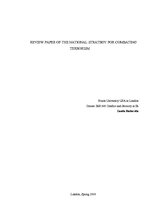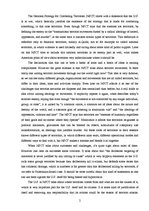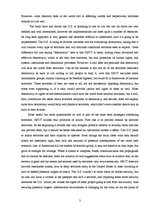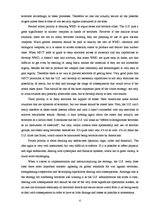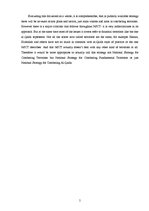-
Review Paper of the National Strategy for Combating Terrorism
The National Strategy for Combating Terrorism (NSCT) starts with a statement that the U.S. is at war, which basically justifies the existence of the strategy that is made for combating something, in this case terrorism. Even though NSCT says that the enemies are terrorists, by defining the enemy as the “transnational terrorist movement fueled by a radical ideology of hatred, oppression, and murder”, at the same time it outcasts certain types of terrorism. This definition is referable only to fanatical terrorism, mainly al-Qaida, not to for example so called national terrorism, in which violence is used limitedly and caring about some kind of public support. Later on this NSCT tries to include this national terrorism in its enemy part as well, what makes American point of view about terrorism very indiscriminate where it should be.
The declaration that this war is both a battle of arms and a battle of ideas is earning compliments. However the great mistake is that NSCT talks about terrorist movement. Is there really one uniting terrorist movement through out the world right now? This idea is very dubious, as we can see many different groups, organizations and movements that are all called terrorists, but differ in their ideas, aims and activities sharply. Even later on NSCT admits it as one of the challenges that terrorist networks are disperse and less centralized than before, but it still holds to idea about uniting ideology or movement. It explicitly repeats it again, when describes today’s terrorist enemy, saying that even though “the movement is not controlled by any single individual, group, or state”, it is united by “a common vision, a common set of ideas about the nature and destiny of the world, and a common goal of ushering in totalitarian rule” and “the ideology of oppression, violence and hate”. The NSCT says that terrorists are “enemies of humanity regardless of their goals and no matter where they operate”. …
ASV stratēģijas cīņā pret terorismu kritiska analīze

